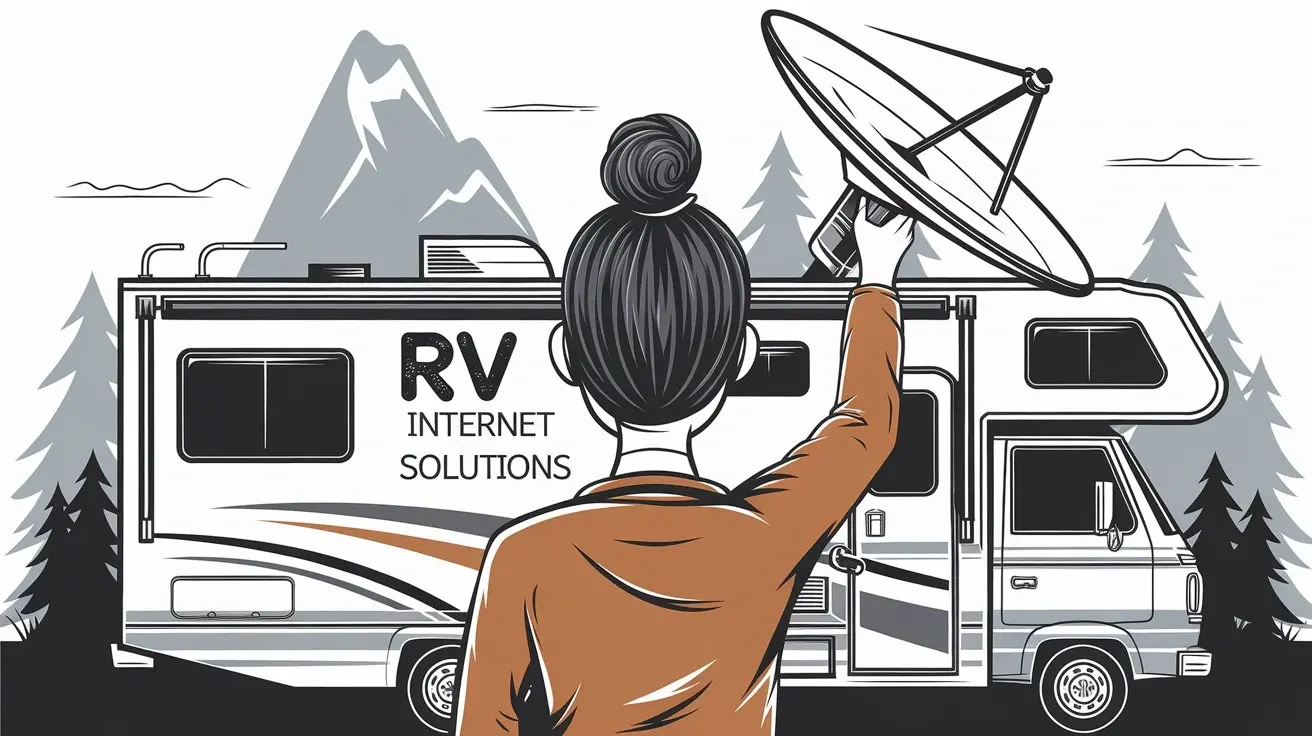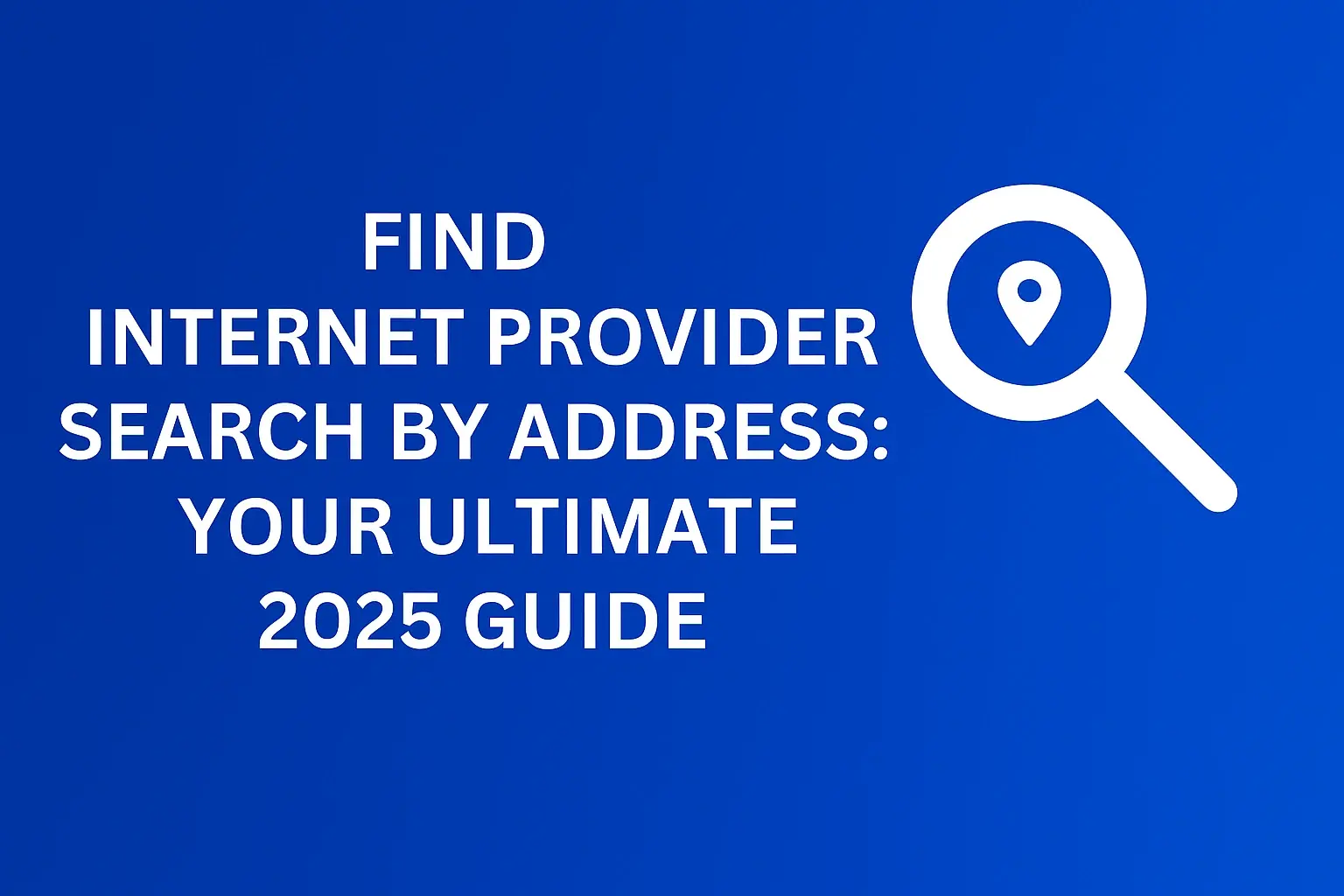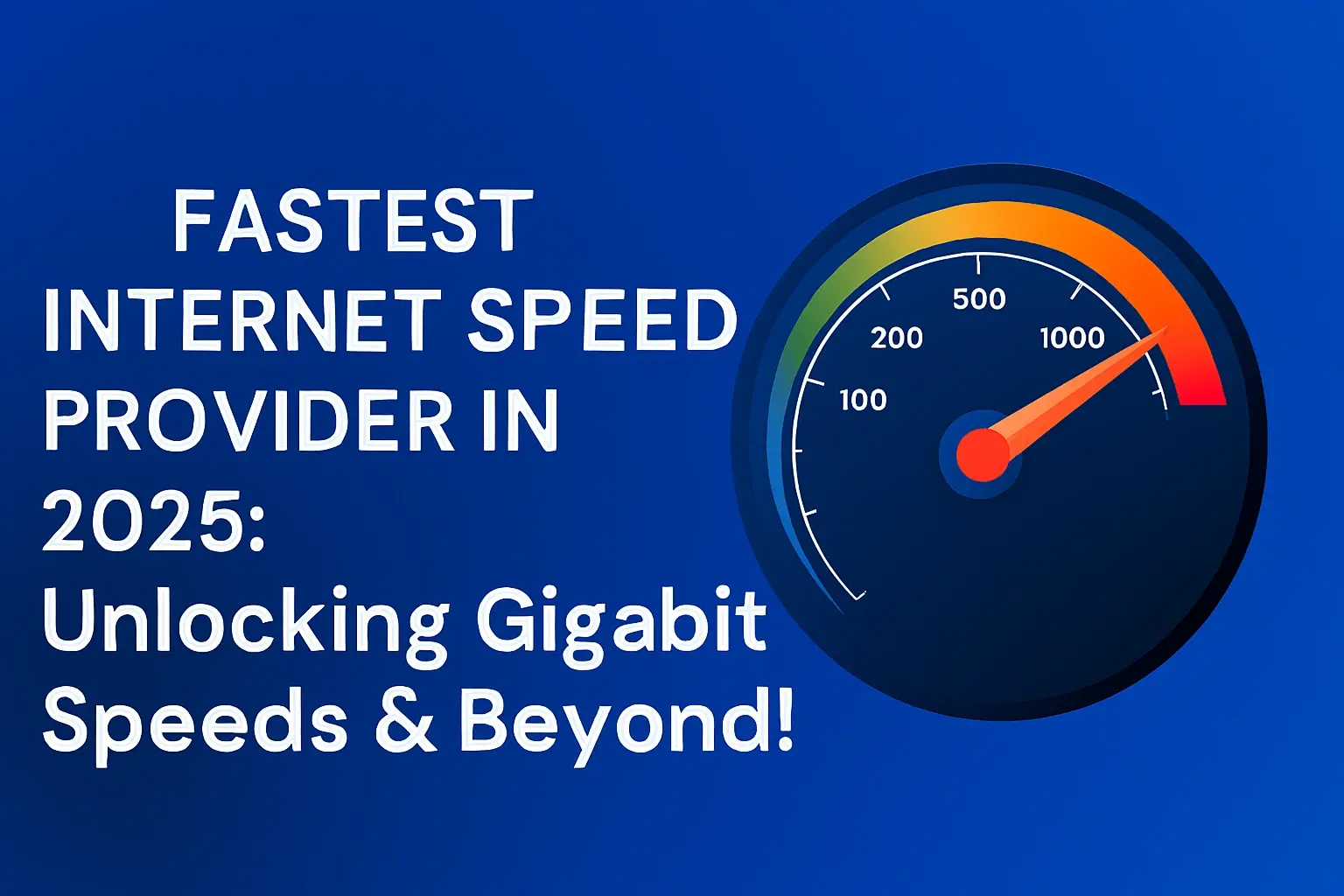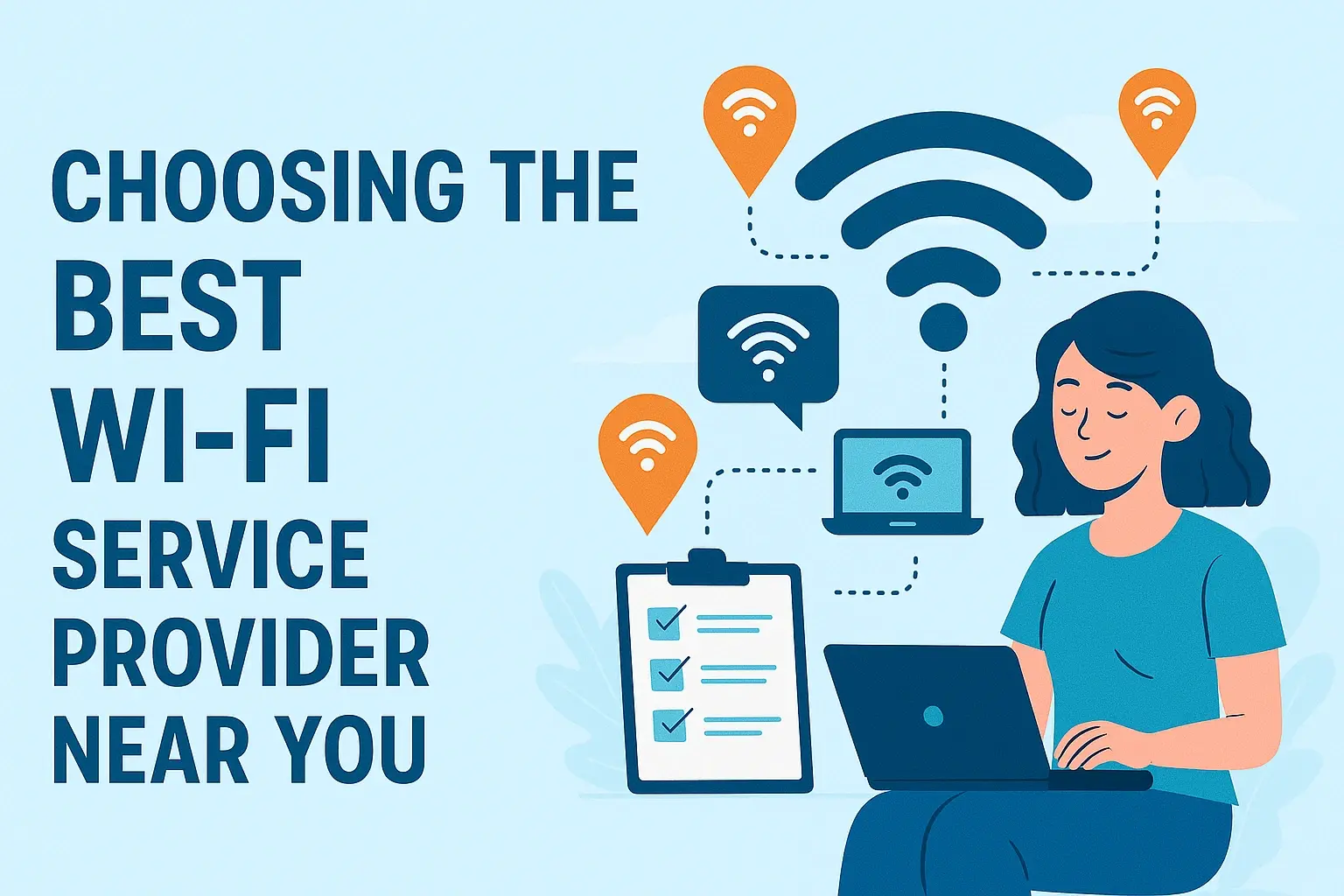RV Internet Solutions

Struggling with slow or unreliable internet while living the RV life? Discover the best RV internet solutions for 2025, ensuring seamless connectivity for work, entertainment, and staying in touch, no matter where your adventures take you. We'll guide you through the options.
Understanding RV Internet Needs
The allure of the open road is undeniable, but for many modern RVers, seamless internet connectivity has become as essential as a functioning refrigerator. Whether you're a remote worker needing to attend video conferences, a digital nomad managing online businesses, a family streaming movies, or simply someone who wants to share your travel experiences in real-time, reliable RV internet is paramount. Unlike a stationary home, RV internet solutions face unique challenges: mobility, varying signal strength across diverse terrains, power consumption, and the need for portability and durability. In 2025, the landscape of RV internet has evolved significantly, offering more robust and flexible options than ever before. Understanding your specific needs is the first step to navigating this complex market.
Key Considerations for RV Internet
Before diving into specific technologies, it's crucial to assess what truly matters for your RV lifestyle. Consider the following:
- Data Usage: How much data do you anticipate consuming daily? Streaming high-definition video, video conferencing, and large file downloads consume significantly more data than basic web browsing and email.
- Speed Requirements: Do you need lightning-fast speeds for critical work tasks, or is moderate speed sufficient for browsing and occasional streaming?
- Location Variability: Where do you typically travel? Are you sticking to well-developed campgrounds with known signal availability, or venturing into remote, off-the-beaten-path locations?
- Budget: What is your monthly budget for internet service and equipment?
- Simultaneous Users/Devices: How many people and devices will be connecting to the internet simultaneously? More devices and users mean higher bandwidth demands.
- Power Consumption: For boondockers or those relying on battery power, the energy draw of your internet equipment is a critical factor.
- Ease of Setup and Use: How technically inclined are you? Some solutions are plug-and-play, while others require more involved installation and management.
The 2025 RV Internet Landscape: A Snapshot
The market in 2025 is dominated by two primary categories: cellular-based solutions and satellite-based solutions. Each has its strengths and weaknesses, and the best choice often depends on a combination of the factors listed above. Cellular technology continues to improve, offering higher speeds and broader coverage, while satellite technology has become more accessible and faster, especially for remote areas. We're also seeing a rise in hybrid approaches, combining multiple technologies for maximum reliability.
Cellular Solutions for RVers
Cellular internet remains the most popular and often the most practical solution for a vast majority of RVers. It leverages the existing cellular networks (4G LTE and increasingly 5G) provided by major carriers. The primary components of a cellular solution typically involve a mobile hotspot device or a dedicated cellular router, coupled with a data plan.
Mobile Hotspots (MiFi Devices)
These are compact, portable devices that create a Wi-Fi network using a cellular data connection. They are easy to use and can be moved between vehicles or even taken into town. However, they often have data caps and may not offer the same level of performance or antenna gain as dedicated RV systems.
- Pros: Portable, easy to set up, relatively inexpensive upfront.
- Cons: Limited data plans, often lower antenna gain, can struggle in areas with weak signals, may not support as many simultaneous devices as a router.
Dedicated RV Cellular Routers
These are more robust devices designed for permanent installation in an RV. They often feature external antennas that can be mounted on the roof, significantly improving signal reception in weaker areas. Many also support multiple SIM cards from different carriers, allowing you to switch providers based on coverage.
Key Features of RV Cellular Routers:
- External Antennas: High-gain antennas capture weaker signals more effectively than internal antennas.
- Dual-SIM Capability: Allows for two different carrier plans, providing a backup if one network is unavailable.
- Advanced Features: Some offer load balancing, failover, VPN support, and remote management.
- Wi-Fi Extenders: Many can also act as Wi-Fi extenders, picking up campground Wi-Fi and rebroadcasting it within the RV.
Popular RV Cellular Router Brands and Models (2025):
The market is competitive, with several brands offering excellent solutions. Some leading options include:
- Peplink: Known for their robust, business-grade routers like the MAX Transit series, often featuring SpeedFusion bonding technology for aggregating multiple connections.
- Winegard: Offers integrated solutions like the ConnecT 2.0, which combines a 4G LTE/5G modem with a Wi-Fi extender.
- King: Provides high-performance cellular boosters and routers designed for RVs.
- MobileMustHave (Reseller/Integrator): Often bundles high-quality routers with external antennas and custom configurations.
Cellular Data Plans for RVers
This is often the most complex and expensive part of cellular solutions. Traditional mobile plans have strict data caps and can be throttled or cut off if used excessively in an RV. However, several options have emerged specifically for mobile users:
- Unlimited Data Plans (with caveats): Many carriers offer "unlimited" plans, but these often have deprioritization clauses, meaning your speeds can be significantly reduced during peak network times or after a certain high-usage threshold. Some plans are also intended for single-device use and may not be suitable for hotspotting.
- Dedicated Mobile Hotspot Plans: Some carriers offer plans specifically for mobile hotspots, but these can be expensive and still come with data caps or throttling.
- Business Plans: Occasionally, business plans offer more flexibility and higher data allowances, but they can be pricier.
- Third-Party Resellers: Companies that resell data from major carriers, sometimes offering plans with fewer restrictions. Research these thoroughly for reliability and legitimacy.
- 5G vs. 4G LTE: 5G offers significantly faster speeds and lower latency, but its coverage is still expanding. In many areas, 4G LTE remains the most reliable option. A good RV cellular setup will often support both.
2025 Data Plan Trends: Expect continued focus on 5G rollout and more sophisticated throttling mechanisms by major carriers. RV-specific plans are becoming more common, but careful reading of the terms and conditions is essential. Many RVers opt for multiple SIM cards from different carriers to maximize coverage and have backups.
Cellular Boosters
For those who frequently travel to areas with weak cellular signals, a cellular booster (also known as an amplifier) is a crucial addition to a cellular setup. These systems consist of an external antenna that captures the faint signal, an amplifier unit, and an internal antenna that rebroadcasts a stronger signal within the RV.
- How they work: They don't create signal where none exists, but they significantly improve reception in fringe areas.
- Benefits: Faster speeds, more reliable connections, and the ability to connect in locations where a standard hotspot or router would fail.
- Leading Brands: WeBoost, SureCall, and King are prominent manufacturers of RV-specific cellular boosters.
Example: Imagine you're in a national forest campground with only one bar of signal. A good cellular booster might boost that to 3-4 bars inside your RV, making your cellular internet usable for essential tasks.
Satellite Internet for RVs
Satellite internet has historically been seen as a niche solution for RVers, primarily due to its cost, installation complexity, and speed limitations. However, recent advancements, particularly with Low Earth Orbit (LEO) satellite constellations, have dramatically changed the game. For 2025, satellite internet is a viable and often superior option for those who need connectivity in truly remote locations where cellular signals are non-existent.
Traditional Geostationary (GEO) Satellite Internet
These systems use satellites in geostationary orbit, approximately 22,000 miles above Earth. They offer broad coverage but suffer from high latency (delay) due to the distance the signal travels, making them less ideal for real-time applications like video conferencing or online gaming.
- Providers: HughesNet, Viasat.
- Pros: Wide coverage areas, including very remote regions.
- Cons: High latency, slower speeds, often significant data caps, and equipment can be bulky and require professional installation. Not typically recommended for most RVers due to latency and data limits.
Low Earth Orbit (LEO) Satellite Internet
This is where the revolution is happening. LEO satellites orbit much closer to Earth (a few hundred to a couple of thousand miles), dramatically reducing latency and increasing speeds. Starlink (SpaceX) is the dominant player in this space for consumers and RVers.
Starlink for RVs:
- How it Works: Starlink uses a phased-array antenna that automatically tracks the satellites as they pass overhead. The system requires a clear view of the sky.
- Service Tiers: Starlink offers different service plans. The "Mobile" plan (formerly "Roam") is designed for RVs, allowing you to use your Starlink almost anywhere Starlink has coverage. There's also a "Mobile Priority" plan for more consistent high-speed, low-latency internet.
- Equipment: The standard Starlink dish is relatively portable and can be mounted on a tripod or a dedicated pole. For more permanent setups, there are "High-Performance" dishes.
- Pros: Significantly lower latency than GEO satellites, much higher speeds, works in very remote areas where cellular is unavailable, provides a truly global connectivity solution.
- Cons: Higher upfront equipment cost, requires a clear view of the sky (obstructions can cause dropouts), data usage can be subject to network management during peak times in congested areas (though less so than GEO), power consumption can be higher than some cellular solutions.
2025 Starlink Statistics: Starlink continues to expand its satellite constellation and ground infrastructure. Expect improved reliability, potentially more regional availability, and possibly new service tiers. Download speeds are typically in the 50-200 Mbps range, with latency often below 50ms, making it comparable to good home broadband.
Comparison: Cellular vs. Satellite (2025)
Here's a simplified comparison for RVers in 2025:
| Feature | Cellular (4G LTE/5G) | Satellite (LEO - Starlink) |
|---|---|---|
| Best For: | Most RVers, populated areas, campgrounds, moderate data usage. | Remote locations, off-grid travel, consistent connectivity where cellular is absent. |
| Speed: | Variable (10-100+ Mbps depending on network and location). 5G can be much faster. | Generally 50-200+ Mbps (download), 10-20+ Mbps (upload). |
| Latency: | Low (20-50ms). | Low (30-50ms), significantly better than GEO. |
| Coverage: | Widespread in populated areas, but can be spotty in remote regions. | Global (where satellites are deployed), but requires clear sky view. |
| Data Caps: | Common, often with throttling. "Unlimited" plans have caveats. | No strict hard caps, but network management applies in congested areas. |
| Equipment Cost: | Moderate (hotspot) to High (router + antennas). | High (dish + modem). |
| Monthly Cost: | Variable (data plans). Can be high for unlimited. | Moderate to High (service plan). |
| Obstructions: | Minimal (buildings can interfere). | Significant (trees, buildings, mountains can cause dropouts). |
Other Connectivity Options
While cellular and satellite are the primary solutions, a few other technologies can supplement or provide alternatives for specific RV internet needs.
Wi-Fi Extenders and Boosters
These devices capture existing Wi-Fi signals from campgrounds, cafes, or other sources and rebroadcast them within your RV, often with improved strength and security. Many dedicated RV cellular routers also have this capability built-in.
- How they work: They connect to an external Wi-Fi source and create a local Wi-Fi network inside your RV.
- Pros: Can save on cellular data costs if campground Wi-Fi is reliable and free/cheap.
- Cons: Dependent on the availability and quality of external Wi-Fi. Campground Wi-Fi is often unreliable or overloaded.
- Popular Brands: Winegard, King, Alfa Network.
Fixed Wireless Internet
In some rural or suburban areas, fixed wireless providers offer broadband internet to homes and businesses using radio waves from a local tower. If you plan to stay in one location for an extended period (e.g., a seasonal RV park), this might be an option, though it's less common for the mobile RVer.
Public Wi-Fi and Hotspots
Leveraging public Wi-Fi at libraries, coffee shops, or using your smartphone as a hotspot are basic, often free, ways to get online. However, these are not sustainable solutions for full-time RVers due to security concerns, inconsistent availability, and limited data.
Choosing Your Ideal RV Internet Solution
Selecting the right RV internet solution is a personal journey, heavily dependent on your travel habits, data needs, and budget. Here's a step-by-step approach to making the best decision for your 2025 travels.
Step 1: Define Your Primary Use Case
Be brutally honest about what you need internet for:
- Remote Work: Requires consistent, reliable speeds, low latency, and high data allowances. Video conferencing, VPNs, and large file transfers are common.
- Streaming & Entertainment: Needs decent speeds and high data allowances. Latency is less critical.
- Basic Browsing & Communication: Lower speed and data requirements.
- Off-Grid/Remote Travel: Prioritizes coverage over speed.
Step 2: Map Your Typical Travel Routes
Use coverage maps from major cellular carriers (Verizon, AT&T, T-Mobile) and Starlink's service map. If you primarily stay in popular RV parks, cellular might be sufficient. If you venture into national forests, BLM land, or remote coastlines, satellite becomes more attractive.
Tip: Look for real-world coverage reports from other RVers in the specific areas you frequent.
Step 3: Estimate Your Data Consumption
This is crucial. A simple way to estimate:
- Web Browsing/Email: ~50-100 MB/hour
- Social Media: ~100-200 MB/hour
- Music Streaming: ~50-100 MB/hour
- HD Video Streaming: ~3 GB/hour
- Video Conferencing: ~1-3 GB/hour
Multiply your estimated daily usage by the number of days you'll be using the internet. For example, 4 hours of HD streaming daily = 12 GB/day. Over 30 days, that's 360 GB per month. This helps rule out plans with insufficient data.
Step 4: Consider Your Budget
Factor in both the upfront equipment cost and the ongoing monthly service fees. Satellite systems like Starlink have a higher initial investment but can offer more consistent service in remote areas than expensive unlimited cellular plans.
Step 5: Evaluate the Trade-offs
No single solution is perfect for everyone. Weigh the pros and cons:
- Cellular: Great for most situations, but coverage can be an issue, and truly unlimited data is rare and expensive.
- Satellite (Starlink): Excellent for remote areas, but requires clear skies and has a higher upfront cost.
- Hybrid: Many RVers use a combination – a cellular setup as their primary and Starlink as a backup or for when they are truly off-grid.
Scenario-Based Recommendations (2025)
Scenario A: The Frequent Campground Traveler who Works Remotely
- Recommendation: A high-quality RV cellular router (e.g., Peplink, Winegard) with external antennas, paired with a business or multi-device hotspot plan from a carrier known for good coverage in your region (e.g., Verizon or AT&T in the US). Consider a cellular booster if you occasionally venture into fringe areas.
- Why: This provides a balance of speed, reliability, and data capacity for work tasks, leveraging the strong cellular infrastructure in most campgrounds.
Scenario B: The Off-Grid Explorer who Needs Consistent Connectivity
- Recommendation: Starlink (Mobile or Mobile Priority) as the primary solution. Supplement with a basic cellular hotspot for quick checks or when Starlink obstructions are an issue.
- Why: Starlink is the undisputed leader for connectivity in areas without cellular service. The mobile plan offers flexibility.
Scenario C: The Budget-Conscious RVer who Primarily Browses and Streams Occasionally
- Recommendation: A reliable mobile hotspot device with a carefully chosen data plan. Look for plans with decent data allowances at a reasonable price. Consider using campground Wi-Fi with a Wi-Fi extender as a primary option if available and reliable.
- Why: This minimizes upfront and ongoing costs while meeting basic needs.
Optimizing Your RV Internet Setup
Once you've chosen your primary solution, optimizing your setup can make a significant difference in performance, reliability, and user experience. These tips apply to both cellular and satellite systems.
1. Antenna Placement is Key
Cellular: For routers with external antennas, mounting them on the RV roof is generally best. Ensure they have a clear line of sight upwards and outwards. Avoid placing them near metal objects that can interfere with signals. If using a booster, the external antenna should be as high and clear as possible.
Satellite (Starlink): The Starlink dish requires a completely unobstructed view of the sky. Even small obstructions (like tree branches) can cause dropouts. Use a stable tripod or a dedicated mast for optimal positioning. In areas with dense tree cover, you might need to move your setup to a clearing.
2. Router and Wi-Fi Configuration
- Firmware Updates: Always keep your router's firmware up to date. Manufacturers release updates to improve performance, security, and compatibility.
- Wi-Fi Channel Optimization: If you're in a crowded campground with many Wi-Fi networks, your RV's Wi-Fi can experience interference. Most routers allow you to select different Wi-Fi channels. Experiment to find less congested ones.
- Secure Your Network: Use a strong WPA2 or WPA3 password to prevent unauthorized access to your internet connection.
- Guest Network: If you have visitors, consider setting up a separate guest network so they don't have access to your main network devices.
3. Power Management
Some RV internet equipment, especially Starlink dishes and powerful cellular routers, can consume a significant amount of power. If you're boondocking, this is a critical consideration.
- Starlink Power Consumption: The standard Starlink dish uses around 50-75W while active. Newer "Flat High Performance" dishes can use more. Look for ways to optimize power, such as shutting down the system when not in use if possible, or ensuring your power system (solar, batteries) can handle the load.
- Cellular Routers: High-end routers with multiple modems and external antennas can also draw substantial power.
- Power Supplies: Ensure your power adapters and inverters are efficient and properly sized for your equipment.
4. Load Balancing and Failover (for Advanced Users)
If you use a multi-SIM router or a combination of cellular and satellite, you can configure it for load balancing (distributing traffic across multiple connections) or failover (automatically switching to a backup connection if the primary fails). This is a hallmark of advanced RV internet setups and provides unparalleled reliability.
5. Data Management and Monitoring
Keep a close eye on your data usage. Most carriers and Starlink provide tools to monitor your consumption. Set up alerts if possible to avoid exceeding limits or incurring overage charges. For cellular, having a secondary SIM from a different carrier can be a lifesaver if your primary plan runs out of data or gets throttled.
6. Test Your Setup Regularly
Before heading out on a long trip, test your internet setup thoroughly. Speed tests (e.g., Speedtest.net, Fast.com) are useful, but also perform real-world tests like making a video call, streaming a movie, or uploading a file. This helps identify potential issues before you're in a critical situation.
7. Consider a Backup Solution
For many, the ultimate RV internet solution is a multi-layered approach. This might involve a primary cellular setup and a Starlink as a backup, or vice-versa. This redundancy ensures you can stay connected even if one system fails or is unavailable due to environmental factors.
Example: You're relying on cellular for work, but a storm knocks out cell towers in your area. Your Starlink kicks in, allowing you to continue your work without interruption. Or, you're using Starlink, but dense fog obscures the sky, causing intermittent issues. Your cellular connection provides a stable fallback.
By implementing these optimization strategies, you can ensure your RV internet solution is as robust and reliable as possible, enhancing your travel experience in 2025 and beyond.
Conclusion
Navigating the world of RV internet solutions in 2025 requires understanding your unique needs and the evolving technologies available. From robust cellular routers with external antennas to the game-changing LEO satellite internet offered by Starlink, there are now more powerful and flexible options than ever before. For most RVers who frequent established campgrounds, a well-configured cellular setup, possibly enhanced with a booster, remains a primary choice, offering a good balance of speed, cost, and availability. However, for those who venture into the truly remote corners of the continent, Starlink has become an indispensable tool, providing connectivity where it was once impossible. Remember to meticulously assess your data consumption, travel patterns, and budget. Don't underestimate the power of optimizing your setup, from antenna placement to firmware updates. By combining the right technology with smart configuration and perhaps even a redundant backup solution, you can ensure that your RV adventures in 2025 are not hampered by connectivity woes. Stay connected, stay informed, and enjoy the freedom of the open road with confidence.





